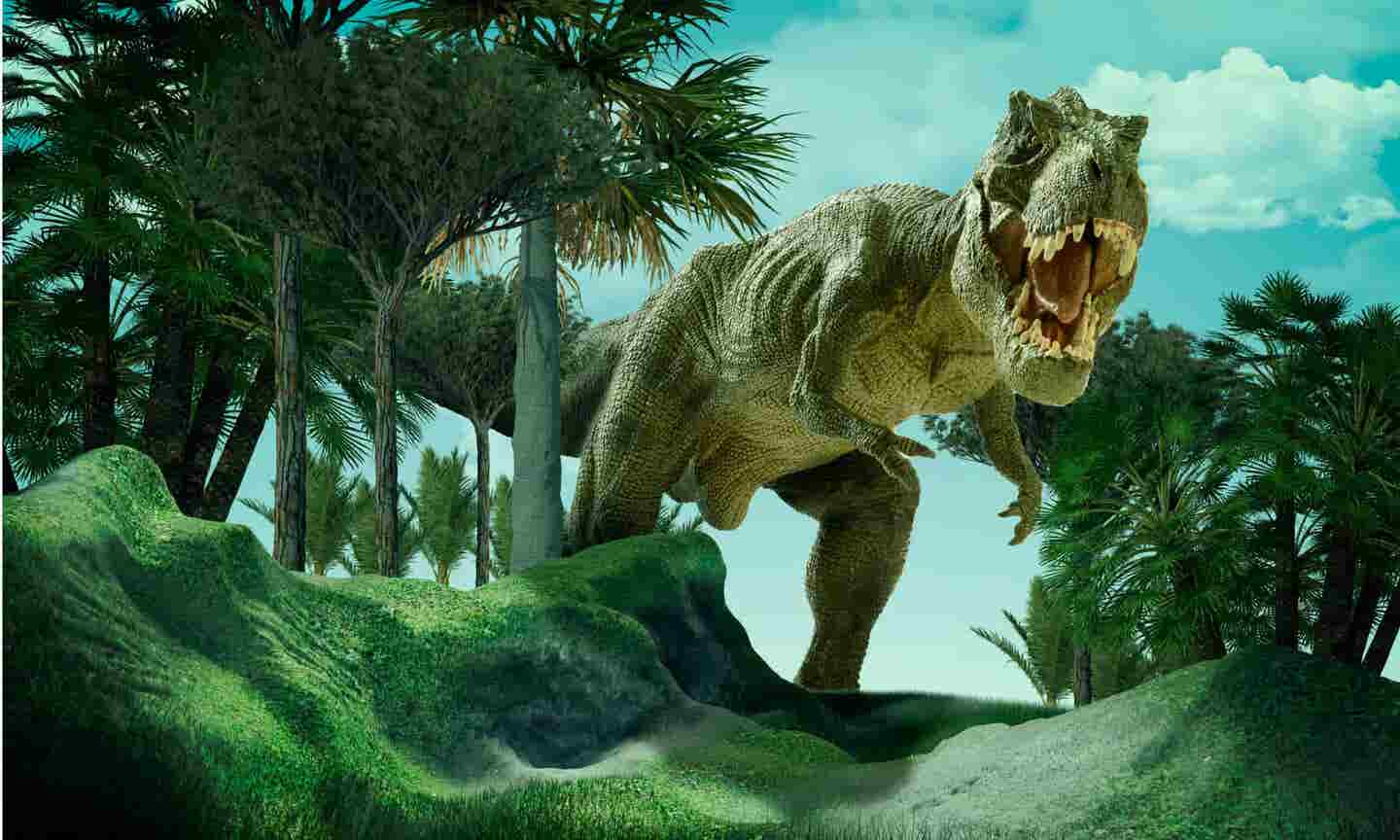Scientists discovered why dinosaurs grew so large
Findings reveal Macrocollum itaquii as the oldest dinosaur with air sacs, shedding light on the evolution that enabled massive size growth

New dinosaur research sheds light on the respiratory evolution that enabled massive size growth. (CREDIT: iStock.com/para827)
Long-necked sauropods were a defining group of dinosaurs that dominated every continent during the Jurassic and Cretaceous periods. Some lineages achieved immense sizes, becoming the largest animals ever to walk the Earth. A crucial adaptation that allowed this growth was a unique respiratory system, supported by air sacs, which lightened their skeletal structures.
Air sacs, found in both extinct dinosaurs and modern birds, helped these creatures capture more oxygen and regulate body temperature. Their presence in sauropods played a critical role in enabling their massive size and resilience in harsh environments.
The identification of Postcranial Skeletal Pneumaticity (PSP) is essential for detecting these air sacs in fossils. This system is characterized by deep vertebral fossae with foramina, linking to internal pneumatic structures like camerae and camellae. While neosauropods, especially titanosauriforms, show extensive evidence of PSP, its origins in early sauropodomorphs remain less understood.
A recent breakthrough has emerged from South Brazil's Norian Candelária Sequence, where scientists unearthed Macrocollum itaquii, a 225-million-year-old unaysaurid sauropodomorph. This dinosaur, the oldest known to possess air sacs, offers critical insights into the respiratory evolution of early dinosaurs.
Researchers from the State University of Campinas (UNICAMP) used micro-computed tomography to explore its skeleton, shedding light on the gradual development of these respiratory adaptations.
Related Stories
Tito Aureliano, the study's lead author, emphasized the significance of air sacs. “These structures made their bones less dense, allowing them to grow to more than 30 meters in length,” he explained. At approximately 3 meters long, M. itaquii was the largest dinosaur of its time, dwarfing predecessors that barely reached 1 meter.
The discovery, published in The Anatomical Record, underscores how air sacs facilitated rapid size increases among dinosaurs.
Fresia Ricardi-Branco, the project's principal investigator, highlighted how this evolutionary innovation provided a competitive edge. "Air sacs gave dinosaurs an evolutionary advantage over other groups, such as mammals, allowing them to diversify faster," she noted. This adaptation enabled early dinosaurs like M. itaquii to endure Triassic climates and later thrive during the Jurassic and Cretaceous periods.
Earlier research suggested that air sacs evolved independently at least three times among theropods, sauropodomorphs, and pterosaurs. M. itaquii, a bipedal ancestor of the massive quadrupeds with small heads and long necks, bridges the evolutionary gap between early dinosaurs and their gigantic successors.
Before this discovery, air sac tissues were classified as either camerate (hollow spaces) or camellate (spongy bone). However, M. itaquii revealed a previously unknown tissue type termed "protocamerate," with an intermediate texture.
Aureliano explained, “The most widely held hypothesis was that air sacs began as camerae and evolved into camellae. Our findings suggest this protocamerate form existed first.”
The study also challenges the prevailing understanding of air sac evolution. Earlier research posited that air sacs appeared in the abdominal region first, spreading to the cervical region by the early Jurassic, about 190 million years ago.
However, M. itaquii displays air sacs in the cervical and dorsal vertebrae but none in the abdominal region. Aureliano remarked, “It’s as if evolution conducted different experiments until it arrived at the definitive system, with air sacs extending from the cervical region to the tail. It wasn’t a linear process.”
These findings underscore the complexity of dinosaur evolution, highlighting how different adaptations enabled these creatures to dominate their environments. The discovery of M. itaquii and its air sacs provides a crucial link between the small early dinosaurs of the Triassic and the colossal giants of later eras.
This research adds another chapter to the fascinating story of how dinosaurs evolved over millions of years, shaping the prehistoric world.
Note: Materials provided above by The Brighter Side of News. Content may be edited for style and length.
Like these kind of feel good stories? Get The Brighter Side of News' newsletter.
Joseph Shavit
Head Science News Writer | Communicating Innovation & Discovery
Based in Los Angeles, Joseph Shavit is an accomplished science journalist, head science news writer and co-founder at The Brighter Side of News, where he translates cutting-edge discoveries into compelling stories for a broad audience. With a strong background spanning science, business, product management, media leadership, and entrepreneurship, Joseph brings a unique perspective to science communication. His expertise allows him to uncover the intersection of technological advancements and market potential, shedding light on how groundbreaking research evolves into transformative products and industries.



